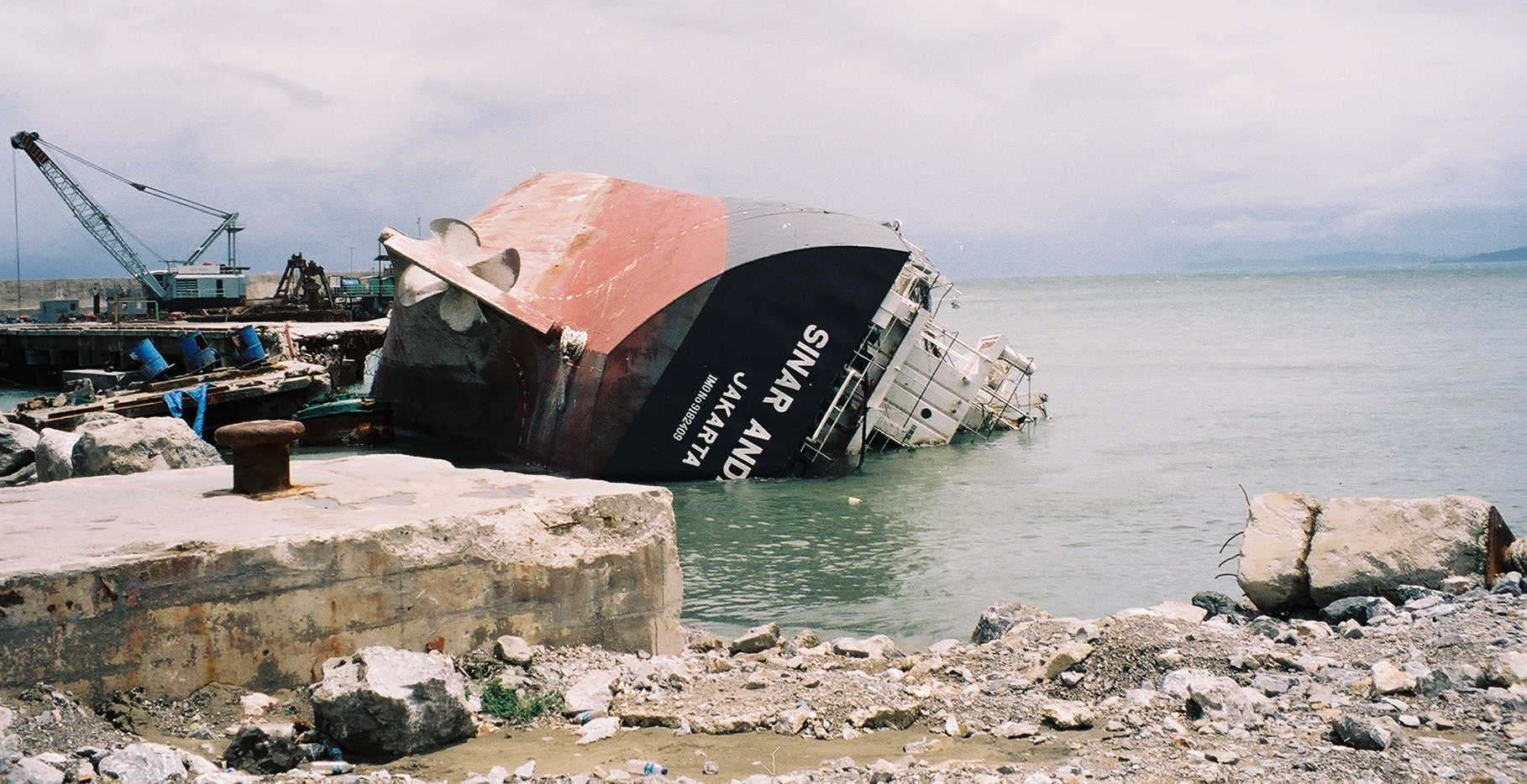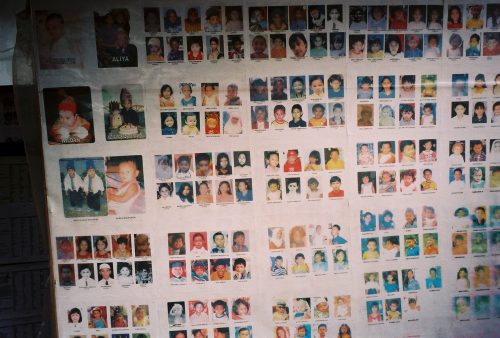2004 Tsunami +10 — Recovery, Lessons
Before and after photos from the 2004 Tsunami. Dec. 26, 2004. Regine Webster was in New Jersey on a holiday trip to her in-laws. Adam Eads was working odd jobs and planning some volunteer work travel to South America in the coming year. Birger Stamperdahl was in Bangkok teaching English, and had recently returned from […]

Before and after photos from the 2004 Tsunami.
Dec. 26, 2004.
Regine Webster was in New Jersey on a holiday trip to her in-laws.
Adam Eads was working odd jobs and planning some volunteer work travel to South America in the coming year.
Birger Stamperdahl was in Bangkok teaching English, and had recently returned from a visit Thailand.
Sam Worthington was enjoying the day after Christmas at his home in Rhode Island.
But that normalcy all changed in a split second when one of the most destructive tsunami waves in history hit land, changing not just the lives of those in its path, but also the course of disaster and humanitarian response.
Worthington would spend the day on the phone, tracking down employees at PLAN, the international non-governmental organization he worked for, who were in the affected areas, making sure they were safe.
Stamperdahl would come to work for Give2Asia one year later, and spend the next years working on tsunami recovery projects.
Eads would shift his planned volunteer work and travel from South America to tsunami affected areas.

For Webster, working at The Bill & Melinda Gates Foundation at the time, the disaster would cement her beliefs that an organization to guide iNGOs and private donors in disaster situations was desperately needed.
The Storm and Recovery
In the early morning hours (Eastern Standard Time), a 9.2 magnitude earthquake rattled the ocean floor just off the west coast of Sumatra, Indonesia. The earthquake was the fourth largest since 1900. In turn, the earthquake created the tsunami wave that traveled 375 miles in 75 minutes, caused damage in 18 countries, and left hundreds of thousands dead and missing in 11 nations. The hardest hit nations were Indonesia, Sri Lanka, Thailand, and the Maldives.
For some areas, there was a lag time of several hours between the earthquake and when resulting tsunami wave made land, however many people had little to no warning, making the storm especially damaging. The U.S. Geological Survey has reported that about 230,000 people died from the tsunami wave, but other reported estimates have differed significantly.
The damage from the wave was so severe that it created numerous challenges to international non-governmental organization and multilateral organizations in providing relief and response – food and immediate needs, logistics, transportation, oversight, coordination, examining short and long-term recovery in areas that were completely devastated and more.
In the immediate response, one of the biggest challenges was simply finding and locating people, said Webster, vice-president of the Center for Disaster Philanthropy (read Regine’s personal blog on the tsunami here).
“There was no Facebook then,” she said. “So there were walls and walls of photos.”
The magnitude of hundreds of thousands of people losing everything in numerous countries is perhaps still understated, said Eads, program officer at Give2Asia.
“I think the largest challenge of responding to this disaster was the breadth of the destruction,” Eads said. “Even a decade later, the thought that one could conceive of any kind of coordinated effort to address the situation seems somewhat absurd. There was just too much to be done…There was also understandably a heavy emphasis on immediate relief, but a proportionately smaller one on long-term recovery.”
Recovery would not come quick. In fact, it would take an entire decade and then some.
Billions of dollars were pumped into the affected areas, from governments, iNGOs, private organizations and individuals, and others. After relief efforts waned, rebuilding began first with homes, then with community buildings and infrastructure, and then moved on to business development.

Reports and evaluations from World Bank did not begin to note affected areas as being completely or significantly recovered until the 6 to 8-year anniversary mark. In part, this was due to a 2005 earthquake that affected some of the areas destroyed by the tsunami.
The Lessons
In the years following the tsunami, there have been numerous books and research reports on lessons learned from the disaster in terms of recovery, coordination, and philanthropy. A handful of those lessons appear over and over again.
• Preparedness – In many ways, the tsunami was the starting point for more advanced and widely used early warning systems. While the need for such systems and in general, better preparedness measures is great, finding enough funding to put those measures in place is a challenge that remains.
“Dollars spent on disaster preparedness are far more efficient in saving lives and property than relief dollars, yet the funding only really comes in the wake of a disaster,” Eads said.
• Working Local – With so many agencies working in on so many fronts following the storm, and with local organization and infrastructure so completely destroyed, adequate consideration of local needs and leaders was not always present in recovery efforts, even though it was vitally needed.
“Working with local organizations gives better opportunity for success,” Eads said. “Locally-based entities are better placed to articulate the needs and priorities of a community that will lead to increased buy-in by beneficiaries and achieve sustained results.”
For some organizations, like Give2Asia, this meant working solely with local partners instead of iNGOs.
Broadly, in the iNGO community, this disaster meant better coordination with the many differing organizations involved.
“We have a much better humanitarian coordination system. The NGOs understand their role and engagement with local government,” Worthington, now president and CEO of InterAction said.
• Long Term is as Important as Immediate Relief – Recovery from the tsunami took years. And while many areas have fully recovered, in some areas, the damage can still be seen.
Not so easily seen are the affects of the disaster on the emotional and mental well-being of those who survived.
“Long-term recovery is as important as immediate relief, and is often not sufficiently addressed by the donor community as a whole,” Eads said.
• Philanthropy – The tsunami changed how the philanthropic community viewed their role in relief and recovery following a disaster.
“Philanthropy is now global,” Worthington said. “There are global events were action is essential, and the past 10 years have been spent making philanthropy more effective.”
Stamperdahl called the response following the tsunami a “game changer.”
“The international community had never before mobilized in such a way for an international natural disaster,” he said. “From that perspective, it set the stage for a new norm for private philanthropy to support disaster, which we saw again for the 2008 Sichuan earthquake in China, the 2008 Typhoon Nargis in Burma, the 2011 tsunami in Japan, and Typhoon Haiyan in the Philippines in 2013.”
Technology in philanthropy was another significant change that occurred after the tsunami response.
“I think the biggest changes have been in the technology that can now be leveraged to reach potential donors,” Eads said. “It’s easier than ever to make a contribution to help in the wake of disaster, and follow where that money goes.”
Response resources have also matured greatly in the past decade, giving donors a whole new perspective.
“This event is when the need for a Center for Disaster Philanthropy became clear,” Webster said. “A central resource where donors could come to better understand how to meet the urgent, medium, and long-term needs following a catastrophe.”
Sources: World Bank, National Geographic, US Geological Survey, GNS Science, Journal of Natural Disaster Science, progress reports from responding iNGOs, first-person interviews.
More like this

Remembering the Asia Tsunami, 10 Years Later
